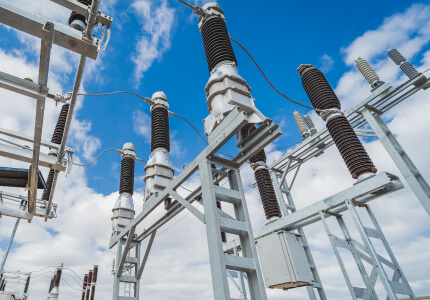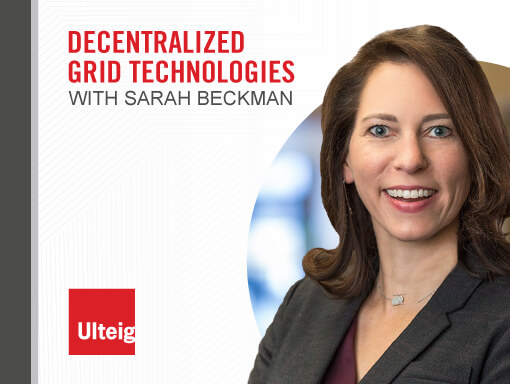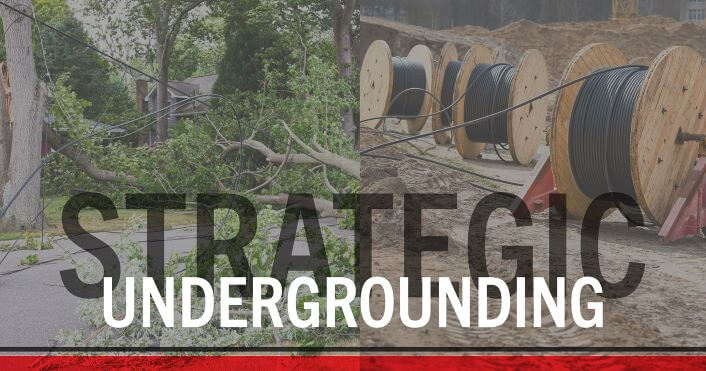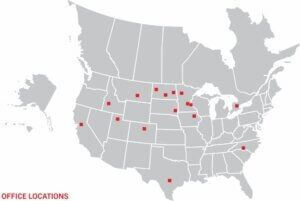Where Utilities Are Making Progress in the Future of Grid Modernization
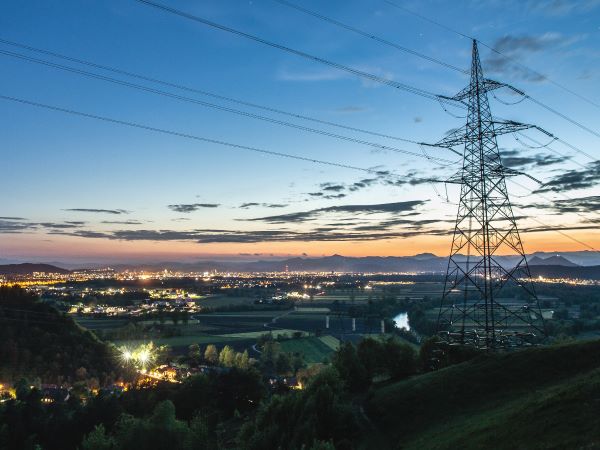
August 9, 2023
The world is at a turning point in energy provisions and electrical delivery. In 2023, we can no longer deny that our existing power grid, which has served us well for more than 140 years, is becoming outdated. Built during a time when fossil fuels were the dominant energy source, this aging distribution system is increasingly strained, at near capacity, to meet the demand for a host of new, contemporary sources. It creates an urgent need to modernize our grid for the next generation in tandem with newer, more renewable energy sources.
Why Is There a Need for Grid Modernization?
Our traditional grid infrastructure was not designed to handle the high levels of intermittent generation and bidirectional power flow created by a host of modern power sources, which can create both power quality and reliability issues on the grid, leading to outages and other problems.
The adoption of distributed energy resources (DERs) such as community and rooftop solar; battery energy storage; the rise of electric-powered vehicles that require charging; the proliferation of mobile devices; and even the effects of climate change are all taxing to our power grid — future factors we could have never anticipated just a few years ago.
As the electric grid continues to age, it is imperative to develop a holistic approach to a grid modernization strategy. Grid modernization is a very broad term that generally refers to the process of bringing antiquated infrastructures up to date, creating a pathway to more resilient, efficient and reliable electrical systems through several strategic, unique solutions incorporating innovative technologies and advanced analytics.
The Power of Grid Modernization
Grid modernization can bring a range of benefits for utilities and their customers, including:
- Increased Reliability and Resilience of the Grid
- Improved Efficiency and Reduced Operational Costs
- Enhanced Customer Service, Engagement and Satisfaction
- Support for the Integration and Penetration of DERs
- Adapting to New Dynamic Loads Including Electric Vehicles
- Reduced Greenhouse Gas Emissions and Improved Environmental Sustainability
A Look Into the Technologies
Several advancements are driving grid modernization, including:
Advanced Metering Infrastructure (AMI)
AMI involves the installation of smart meters across the grid that capture and transmit detailed data on energy consumption and generation. This data can be used by utility providers to optimize their grid operations, improve customer service and support the integration of smaller DERs meant to aid the grid by generating auxiliary power. AMI technology provides a wealth of data that can be used for various applications, such as demand response, power outage management and customer engagement.
Fault Location, Isolation and Service Restoration (FLISR)
In the event of an outage, restoring power as quickly as possible is imperative. That’s where FLISR technology plays such an integral role. FLISR is a system that automates the detection and isolation of faults on the grid, allowing utilities to restore power more quickly and efficiently. With FLISR, utilities possess the ability to locate and isolate faults in real time, reducing the wait time it takes to restore power to customers — especially in the face of major weather events or natural disasters.
Non-Wires Alternatives (NWA)
As the name suggests, NWAs are alternative energy solutions to the traditional poles and wire approach that can defer or eliminate the need for traditional — and often expensive — grid infrastructure investments, such as constructing new transmission or distribution lines and substations. These can take many forms including DERs (smaller-scale energy resources) or BESS (Battery Energy Storage Systems) to take a load off the main power grid. NWAs can result in a more efficient grid savings passed onto utilities and their customers, and reduced carbon emissions.
One benefit of grid modernization especially worth noting is in Time-of-Use (TOU) rates and demand response programs encouraging customers to adjust their energy consumption during peak hours, which can provide great relief not only to the power grid but also to customers’ budgets. By providing financial incentives for energy conservation during high-demand periods, grid loads can be better managed to reduce overall strain on the system. Ulteig assists utilities in developing innovative rate structures and demand response programs to promote grid efficiency.
Ulteig’s Approach to Grid Modernization
Employing value propositions of resiliency, system integration, visibility and adaptability, experts on the Ulteig Grid Modernization team involve themselves in the planning process and evaluation of every aspect of propelling the grid into the future. “We help utilities with understanding the current state of their distribution system and outline a roadmap to get them on the right track for a more modern grid,” says Josh Guck, Ulteig’s Technical Manager of Grid Modernization.
Guck notes that we have recently become heavily involved with DER (Solar/ESS) grid impact studies, helping utilities manage incoming DER applications to ensure safe, reliable interconnectivity to the distribution grid.
The Grid Modernization team also involves itself in NWA solutions in instances traditionally resolved through means of increasing line capacity or adding additional lines to source new energy loads or add resilience. Guck and team, for example, recently completed a successful assessment of solar and battery additions to the end of the line on the Custer Public Power District’s distribution grid.
“They had been seeing extreme growth in a less-than-ideal location based on the existing configuration of the distribution grid,” he explains. “We helped identify a possible solution that incorporated a solar garden and battery that would help during peak usage times, eliminating the need to construct a new traditional source by extending a transmission line and building a new substation.”
What the Future Holds
We recommend four stages for implementing a long-term grid modernization strategy:
- System Evaluation and Framework Design
- Communication, Network and Data Management
- Tech Solutions and Field Implementation
- Data Analytics Processing
Guck says that his team has primarily been focused on phase one as they work towards developing their capabilities in at least one or more subsequent phases. “Understanding the impacts of electrification and how to best mitigate and optimize those impacts,” he adds, “will be a huge undertaking for utilities as electricity consumption continues to evolve.”
Powering Up the Grid
Modernization of the electric grid is a crucial consideration for preparing energy distribution systems for the future. By implementing a cost-effective strategy, utilities can achieve everything from improved system reliability to a distribution grid better prepared for future DERs.
Our expertise in grid modernization can help utilities navigate the complex process of implementing new technologies and analytics, and develop a customized solution that meets their unique needs. For more information on grid modernization, visit our Services page or reach out to our team.
WHAT MAKES ULTEIG DIFFERENT?
From global energy producers to locally funded cities and private developers to government agencies, the clients we serve encompass a broad range of relationships and projects. Find out why Ulteig is a leader in the engineering industry.
Contact Us
